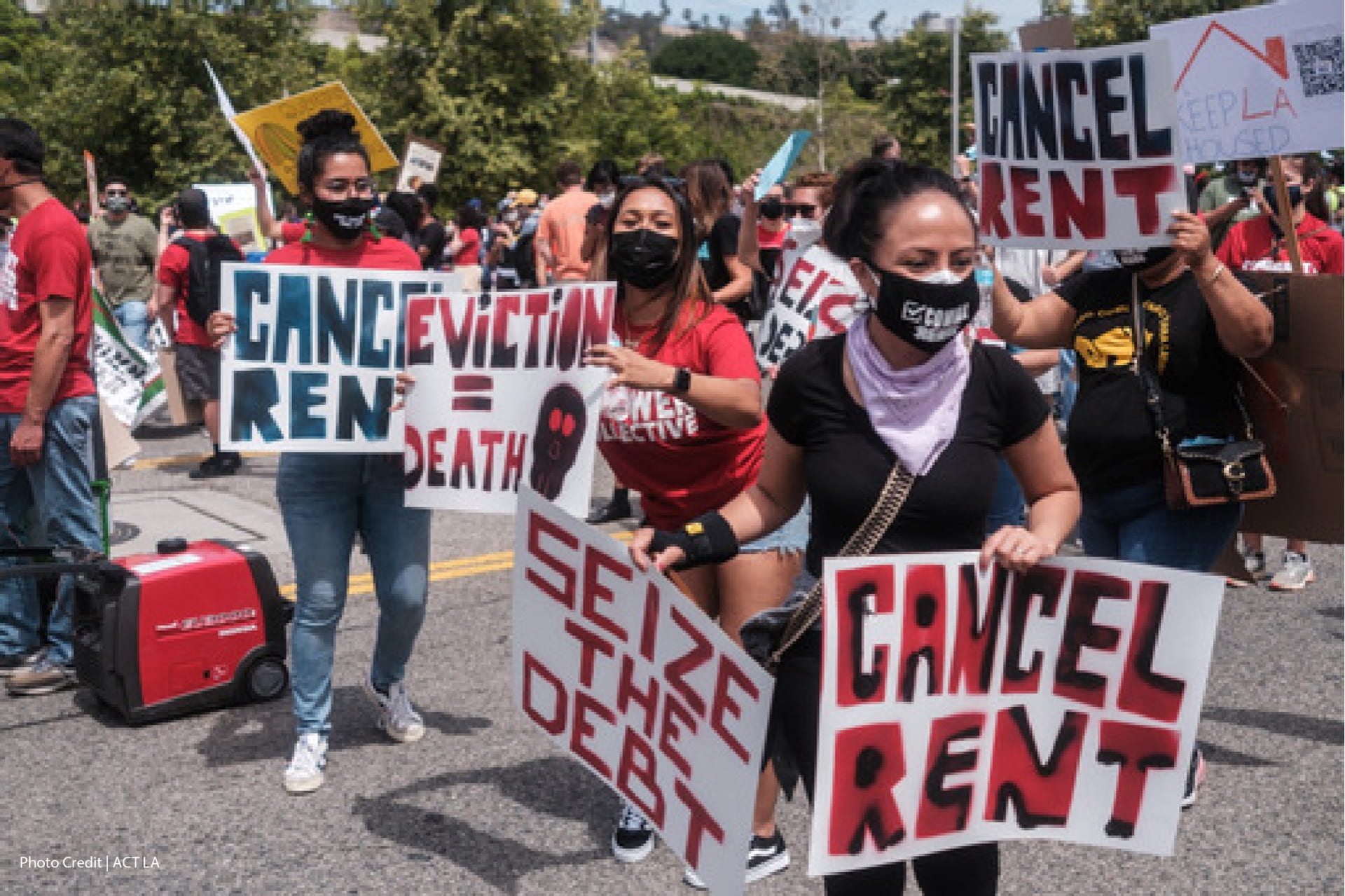fall 2021
The anti-displacement studio partnered with the Alliance for Community Transit- Los Angeles (ACT-LA), a broad-based coalition of LA-based organizations advocating for transit justice, housing justice, environmental justice, and public health. Their shared vision is to create just, equitable, sustainable transit systems and neighborhoods for all people in Los Angeles, placing the interest of low-income communities and communities of color first as the region becomes more sustainable. ACT-LA invited the studio to collaboratively research and codesign social housing typologies for three Los Angeles neighborhoods that are well integrated with the neighborhood’s socio-spatial context while incorporating green building and urban design elements that simultaneously harness and enhance existing neighborhood infrastructures and amenities.
Concept Maps
For this first studio exercise, students created a pair of concept maps, the first summarizing key drivers, mediating conditions, and effects of urban displacement and the other representing Sweet Water Foundation’s practice. Studying the Sweet Water Foundation’s practice of Regenerative Neighborhood Development (RND) in Chicago helped build an understanding of real anti-displacement work that is rooted in place and community.
Design Impact Maps
For this second studio exercise, students comparatively analyzed the Sweet Water Foundation’s practice of Regenerative Neighborhood Development alongside prevailing approaches to “equitable development” and “creative placemaking” in adjacent Chicago neighborhoods along with the larger temporal, geospatial, and sociocultural context. They then created design impact maps, which consider goals, programs, and effects (designed + non-designed) of the initiatives and raise questions about their tensions and tradeoffs.
Case Studies
For this third studio exercise, students conducted case studies of anti-displacement measures around the world that specifically focus on decommodified or social housing. In addition to collecting and analyzing secondary data, they conducted virtual interviews with practitioners and advocates from the respective locales. They then created a visual summary of case findings focused on the defining attributes of the policies/programs and key takeaways for the US context– with guidance and feedback from ACT-LA staff and members.
Social Housing Codesign
For this fourth and final studio exercise, students worked with ACT-LA staff, coalition members, and partners to co-design social housing typologies for three Los Angeles neighborhoods that are well integrated with the neighborhood’s socio-spatial context while incorporating green building and urban design elements that simultaneously harness and enhance existing neighborhood infrastructures and amenities
